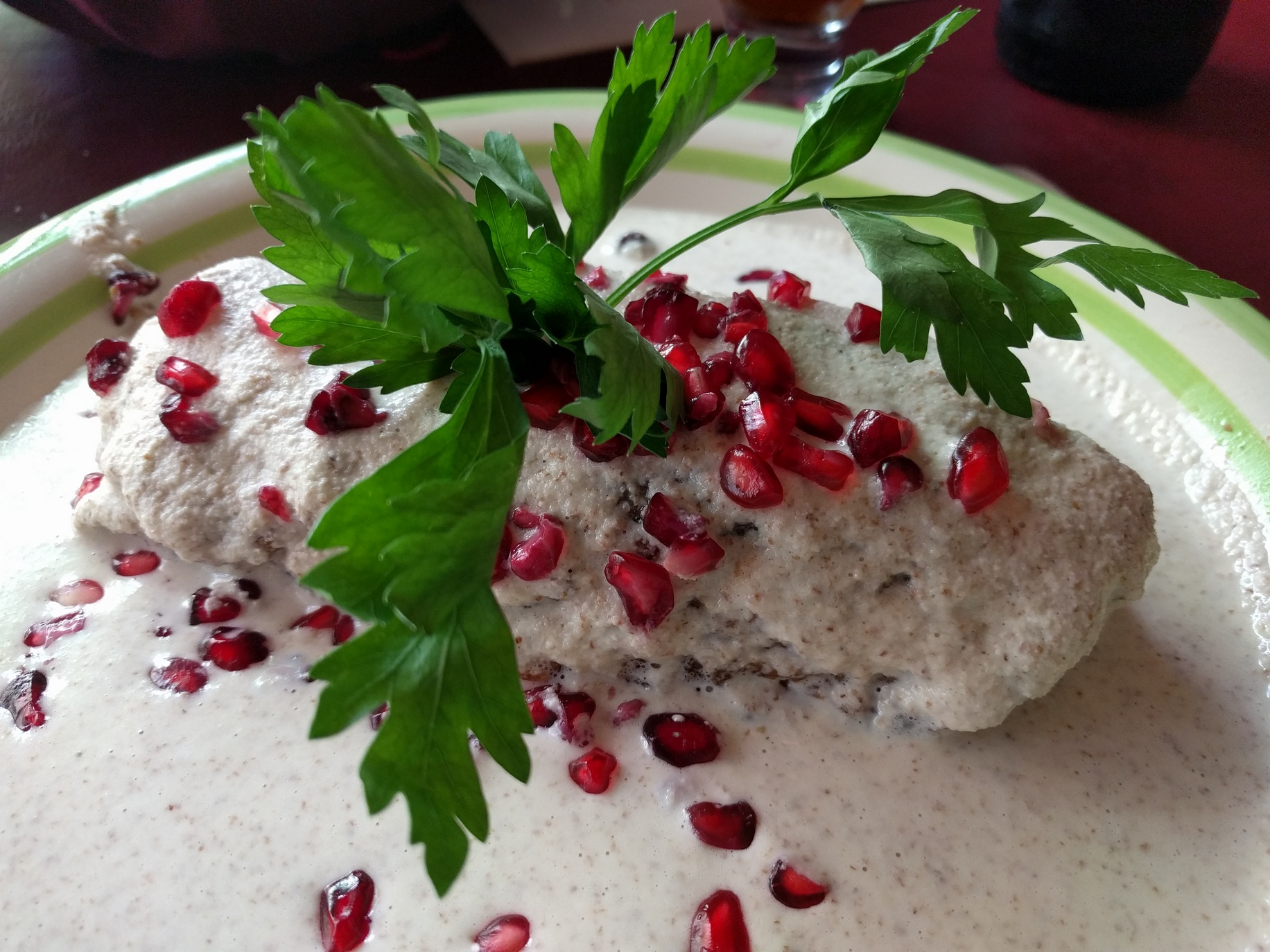Hurrah for the red, white, and green! Despite several changes in form of government over the years, the colors of the Mexican flag have stood since Mexico declared its independence from Spain in 1821. One of the most elaborate of Mexican dishes seems to date from the same year. Tradition says that the nuns of Puebla’s Santa Monica convent created chiles en nogada to honor General Agustín de Iturbide when he visited the city after by signing the Treaty of Córdoba on August 28. (Puebla celebrates the Festival of Chile en Nogada on that day every year.) The dish echoes the colors of the flag in the green poblano chiles stuffed with picadillo, the white of the walnut cream sauce that enrobes it, and the red of fresh pomegranate seeds liberally sprinkled on top.
Hostería de Santo Domingo specializes in chiles en nogada
 Chiles en nogada is usually a seasonal dish, coinciding with the ripening of poblano peppers and the first availability of fresh pomegranates. It’s served at lots of places from late August to September 16, the anniversary of the beginning of the Mexican War of Independence. It’s often sold well into January, when the last pomegranates hit the market. But the dish is available in every season at the venerable Hostería de Santo Domingo, about four blocks northwest of the cathedral in Mexico City. In fact, the restaurant calls itself “la cathedral del chile en nogada desde 1860.”
Chiles en nogada is usually a seasonal dish, coinciding with the ripening of poblano peppers and the first availability of fresh pomegranates. It’s served at lots of places from late August to September 16, the anniversary of the beginning of the Mexican War of Independence. It’s often sold well into January, when the last pomegranates hit the market. But the dish is available in every season at the venerable Hostería de Santo Domingo, about four blocks northwest of the cathedral in Mexico City. In fact, the restaurant calls itself “la cathedral del chile en nogada desde 1860.”
A fairly fancy restaurant with waiters in tuxedos, the Hostería de Santo Domingo serves two sizes of chiles en nogada. The standard plate is huge, and costs 275 pesos (about US $13.50). The “medium sized” portion, shown above, costs all of 195 pesos (about US $9.50). When we had a weekday lunch at the end of October, we were the only tourists in sight. And at least one diner at every table ordered the dish.
In fact, chiles en nogada is a plate best left to restaurant cooks. The picadillo inside the chiles is a remarkably complex mixture of shredded meat, spices, and various fruits. Think of it as Mexican mincemeat. The walnut cream has milk, heavy cream, ground walnuts, and just enough crumbly fresh cheese curd to make it slightly grainy. The name “nogada” comes from the Nogal de Castilla, or Castilian walnut.
The flavors of the dish are complex—at once spicy, slightly piquant, creamy, and rich. The crunch of the pomegranate seeds contrasts with the soft textures of the rest of the dish. It’s delicious. Hurrah, indeed, for the red, white, and green.

